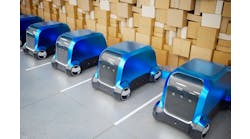Sometimes operators sense changes missed by managers and engineers
Dale’s plant had been dutifully manufacturing and shipping out tank wagons of useful chemicals, until one day a customer called to return a batch—it was off-spec for color, which was required to be water-white. That was unfortunate and garnered the attention of layers of management that usually left their little plant on the prairie in peace. When it began happening every 10th shipment or so, the small staff was perplexed. What had changed, or was changing, that caused seemingly random batches to fail their own and their customer’s expectations?
Measurements in a small facility aren’t always abundant, and process history may not reveal much in deviations from the happy days of yore when customer complaints were near zero. In Dale’s plant, the old guard of process experts who had run the process for years were mostly retired, and the one or two that were still warming a seat in the office seemed weary and dismayed by a problem they thought they had solved long ago. Lab grab samples and investigations only reinforced what they were already experiencing: sometimes they were fine and sometimes they went off spec.
So, was there something Dale wasn’t measuring that would correlate the cause to the effect? Are the pressures and temperatures the same during startup and shutdown as during steady state? Does the measurement accuracy matter when rates are at the low end of design?
In these circumstances, the I&C specialist on staff is vastly more effective in proportion to the extent of their detailed and intimate understanding of the process. Some of that knowledge can be first principles, such as how the boiling point of fill fluid goes down with pressure. And much of it can be heuristic or observational. Knowledge of the age, history, wear and tear, and reliability of mechanical equipment and instruments can all become informative when discerning causes and correlations from noise or coincidence.
Adding even a rudimentary sensor to an existing process—say a temperature or a pressure—can pose some challenges. Is there an unused process connection? Can the sensor/transmitter be connected while the process is online, or must the work wait for a shutdown? Can a nozzle be added to a process vessel without invalidating its “R-Stamp” and necessitating a full hydrotest? Will a surface temperature work where no process connection can be made? For process troubleshooting of otherwise poorly understood malfunctions, an array of six to 12 mobile (and hence wireless) transmitters can be extremely useful.
But if phenomena are fleeting, a surface temperature sensor or even a sensor in a thermowell, may not be responsive enough to catch it. Conductivity of wells, pipes and sensors make changes in temperature lag the event. Wireless pressure gauges might only update once a minute. A transmitter can be configured to update more quickly, maybe as fast as every four seconds, but that extracts a toll in bandwidth (gateway capacity) and battery life.
Engaging the operations team who manage the plant 24/7 can help—sometimes operators sense changes that are missed by managers and engineers. Is a bearing making a new squeal, a valve operating in a different position, a loop less stable? Operations might be among the harshest critics of instrumentation, but they also welcome any information that makes their shift less stressful.
In Dale’s case, a conversation with operations led him to product storage tanks. There, his array of sensors enabled him to determine that a conservation vent—a mechanical safety on top of one tank that should close to exclude air—was sometimes hanging up in the open position. A combination of heat, level, pressure, vent position and influx of oxygen was enough to ruin a batch.
Process insights spur thoughts about what might be a useful property to measure, and knowledge of rudimentary measurement principles and limitations can help refine choices for each application. Develop and empower your “Dale”—it’s good for the plant, good for the enterprise, and good for business.






